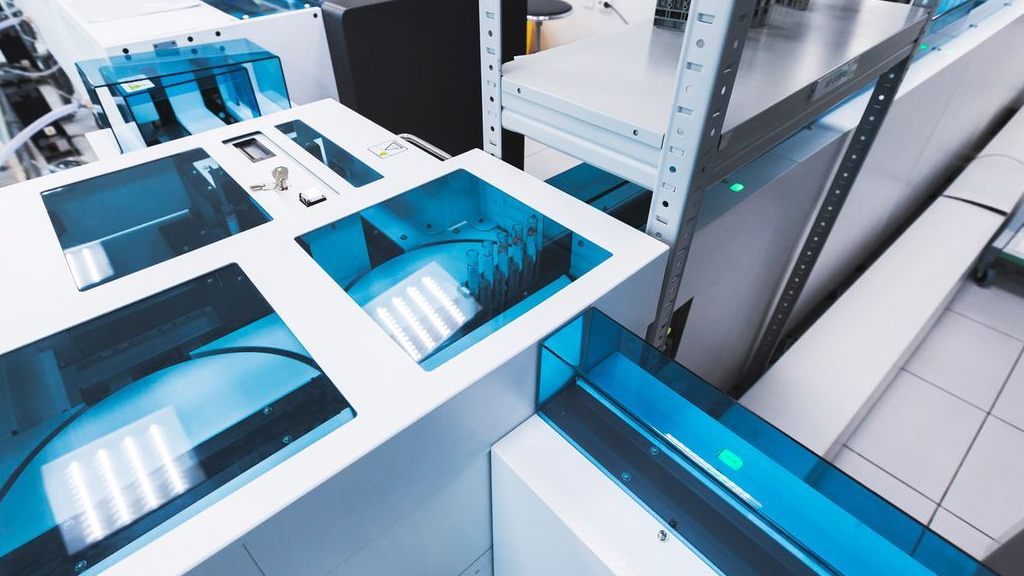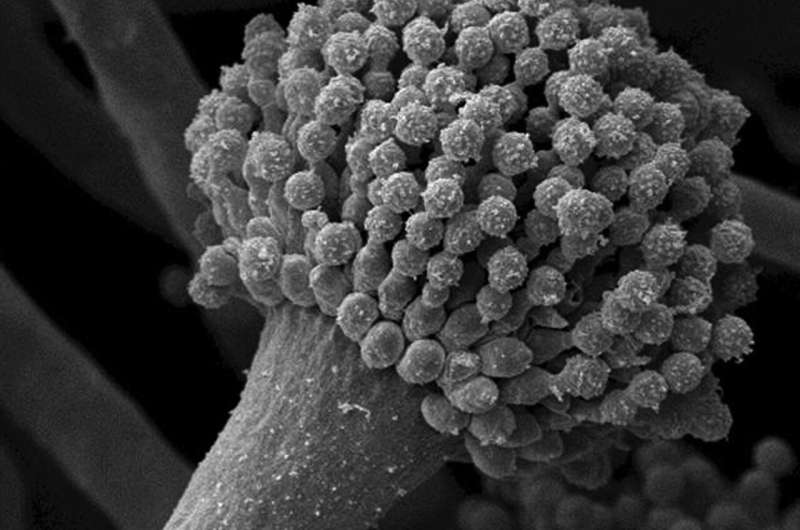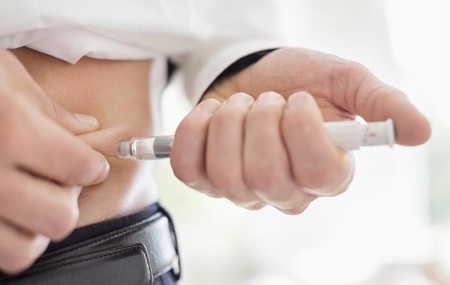
مکانیزاسیون فرآیندها با BPMS

قرص جدید انسولین ساخته شد
Laboratory Automation – A Definition
The term “automation” first appeared in 1936. Harder used it to describe the transfer of work tasks to machines in a production process without human intervention [1]. Today, the general definition of automation means the execution of work processes by machines or software solutions for the automated processing of processes that are otherwise carried out manually. Today, automation solutions are widespread in traditional industry
Laboratory automation is part of automation technology and pursues the goal of developing and optimizing technologies for automating classic laboratories. These include a wide variety of laboratories that work in the fields of medical diagnostics, environmental analysis or quality control – e.g. in the pharmaceutical industry, food monitoring or generally in industrial production. Laboratory automation today is a complex integration of robotics, computers, liquid handling systems and numerous other technologies. The term laboratory automation was originally coined in the chemical industry. However, today it is used for all kinds of laboratory tests and tasks
Short History of Laboratory Automation
The history of laboratory automation is still quite young. The first attempts can be traced back to 1875, when devices for automatically washing of filtration residues on filter paper were described for the first time. The first automatic burette for laboratories with recurring titrations was described by Squibb in 1894 [2]. In the same year, Greiner presented an automatic pipette for the Babcock milk test [3]. The first devices were developed by scientists themselves to solve pending problems in the laboratory. They were very fragile systems; the solutions were rather proprietary and not widely used. A first major push for laboratory automation came from the coal and power generation industries. Commercial systems have been developed for grinding coal samples and for determining carbon dioxide in flue gases to optimize combustion processes. During World War I there was a tremendous need for rapid gas analysis, leading to the development of the first commercial automated laboratory equipment
The first systems were based on measuring changes in conductivity on a heating wire [4]. New requirements came in the 1920s from the sugar and paper industry, where there was an increasing need for pH determinations at different production steps. This started the era of developing electrodes for pH control. In 1929, the first automated titration systems were introduced; these used a photocell to detect the color change in the solution. With the beginning of World War II, there was a further boost in the development of automation solutions in process control. The background to this was, on the one hand, increased demands on the production of goods relevant to the war, and on the other hand, a lack of qualified workers [5]. Particular attention was paid to the development of semi-automated distillation apparatus [6]. By the end of World War II, the use of automated systems in the chemical industry had already become routine. Electronic components were increasingly used to control valves. The development of automated titrators was advanced; In 1948 a device was developed that used a motor-driven syringe to add the titrant. Innovative technologies in the dosing of liquids were essential for the further development of laboratory automation. In 1957, Schnitger developed a new type of pipette that already had all the features of today’s modern piston pipettes. Today’s mechanically adjustable micropipettes are based on a development by Gilson, which he patented in 1974 [7]. Technical advances in the development of small motors and valves led to the introduction of semi-automated syringe-based pipetting systems in the 1970s. The development of microprocessor technology made it possible to create program sequences for controlling the motors and valves, and thus led to the first fully automatic pipetting systems. The first automated liquid handling systems emerged in the 1980s as a result of further electrotechnical developments
The development of laboratory automation was also essentially driven by medical and clinical applications and requirements. The first true automated systems appeared in medical laboratories in the mid-1950s. The beginning of the 1970s saw the introduction of robots into clinical laboratories and thus the era of total automation. A revolution in this field occurred in the 1980s when Dr. Masahide Sasaki opened the first fully automated laboratory [8]. In addition to the requirements of clinical laboratories, the development of high-throughput screening (HTS) methods in the pharmaceutical industry has been of particular importance for the development of laboratory automation since the 1980s. Parallel sample processing was increasingly used in the automation of bioscreening. Test methods based on microtiter plates were first presented in 1986 [9]. With interchangeable hands, the systems could carry out different laboratory processes such as pipetting, washing plates or adding reagents. The use of articulated robots was a very cost-intensive variant of the automation of such processes, and thus not generally applicable. Numerous companies have therefore developed specialized liquid handling systems based on a Cartesian robot structure. The first 96-channel pipetting system was developed by TomTec in 1990 [10], followed later by a variant with a 384 pipetting head. The developments of recent years in the field of collaborative robots increasingly enable the use of cost-effective automation solutions in small and medium-sized companies
Applications and Potentials of Laboratory Automation
Automation solutions are increasingly being used in numerous areas. First, bioscreening and pharmaceutical testing should be mentioned here, which have influenced the development of highly parallel laboratory automation systems to a considerable extent. Enzyme and cell-based assays provide information about the biological relevance of drugs. Cell-based assays are therefore used extensively in drug development, where they now account for more than half of all studies for target validation and ADMET studies (absorption, distribution, metabolism, elimination, and toxicity) [11]. Classically, proliferation, migration, invasion, apoptosis, etc. are examined. Enzyme-linked immunosorbent assays (ELISA) are antibody-based detection methods that belong to the enzymatic immune adsorption methods and are based on an enzymatic color reaction. Further areas of application for automation solutions are DNA extraction and purification, as well as DNA quantification. The polymerase chain reaction (PCR) is usually used for the in vitro amplification of genetic material. Next generation sequencing (NGS for short) is an improved technology for DNA sequencing that, in contrast to classic enzymatic (Sanger sequencing) or chemical sequencing (Maxam-Gilbert method), allows higher speeds and thus the sequencing of a complete human genome within short periods [12]. This has drastically reduced the cost of DNA analysis, making the technology available to more scientists around the world
In addition to the pharmaceutical industry, another large area of application is clinical investigations. In addition to classic clinical parameters such as electrolytes, simple metabolites, enzymes and cardiac markers, increasingly complex issues are coming into focus. These include, among other things, the determination of drug levels and drug screening or the detection of pathogens in infectiology. Other major areas are food analysis and environmental analysis. Due to numerous legal requirements, extensive investigations and qualitative and quantitative determinations of a wide variety of compounds are required
The market potential for laboratory automation solutions is significant. For the period 2017-2026, the global laboratory automation market is forecast to grow at a CAGR of 6.58% [13]. An increasing shortage of (qualified) workers and a high demand for diagnostic examinations with short processing times are important factors for future market growth. The drivers of laboratory automation also include constantly increasing R&D expenditure in companies in the life sciences industry. Drug discovery, proteomics and genomics processes are time-consuming development cycles associated with high costs and high potential for risk, particularly from human error. Automation of individual processes in this area leads to a drastic reduction in the time required and enables a significant reduction in human error
The US has the largest market share, due to rising spending and a high prioritization of R&D opportunities in both the public and private sectors. Great Britain is the leader in the European market. The second most significant market for laboratory automation in Europe is Germany. In Asia, China is by far the largest market for laboratory automation. Japan is traditionally one of the leading countries in the field of laboratory automation. Very high annual growth rates of 8.6% are expected for South Korea
Advantages and Disadvantages of Laboratory Automation
The main goal of the automation of laboratory processes has not changed since the first steps in this field and consists of increasing the number of processed samples (and thus productivity), reducing the required processing times per sample, improving the quality of the experimentally collected data or the creation of opportunities for investigations that would not be possible without suitable laboratory automation. One of the main advantages of laboratory automation is the achievable cost savings. Automated systems can process a much larger number of samples, which significantly reduces the costs per sample. In addition, a significant reduction in the workload of the laboratory staff can be achieved. Automated systems protect workers from performing hazardous process steps and handling toxic or biohazardous materials [14]
Automation systems in the laboratory contribute to increasing efficiency. They enable the processing of a higher number of samples. Throughput increases of 75-80% have been reported for individual applications [15]. It should be noted here that automation systems do not always execute the process steps faster than the human operator. Higher sample numbers result on the one hand from greater parallelization of sample processing and longer working times of the systems, preferably in 24/7 mode. A significant advantage of automated processes is better traceability of the samples. Accreditations and certifications require a high level of standardization of all process flows, i.e., exact compliance with and documentation of all process steps in accordance with the underlying Standard Operating Procedures [16]. Automated systems offer considerable advantages here. The complete takeover of all process steps by automated systems eliminates the differences that arise from different operators. This also reduces the variances between individual samples [17]. Overall, errors can be avoided in particular, which occur due to the highly manual process steps in the pre-analytical phase
The main limitations for the comprehensive use of laboratory automation systems are the high acquisition costs and the increasing need for operating materials due to the use of automation solutions. Fully automated systems and automation lines are characterized by a considerable space requirement. This is not always available in classic laboratories, so that previous laboratory space had to be made available for the automation systems. The higher the complexity of an automation system, the higher the probability of potential failures. A distinction must be made here between the failure of individual components and the failure of the entire system
Literature
[1] Hitomi, K. (1994) Automation – its concept and a short history. Technovation, 14(2), 121-128
[2] Squibbb, E. R. (1894) Automatic Zero Burette. J. Am. Chem. Soc., 16(3), 145-148
[3] Greiner, E. A. (1894) New Automatic Pipette. J. Am. Chem. Soc., 16(9), 643-644
[4] Shakespear, G.; Weaver, E. (1920) Notes and Correspondence: Automatic Methods of Gas Analysis Depending upon Thermal Conductivity. J. Ind. Eng. Chem., 12810), 1027
[5] Olsen, K. (1997) Rosie the Robot, Laboratory Automation and the Second World War, 1941 to 1945. Lab. Robot. Autom., 9(3), 105-112
[6] Ferguson, B. (1942) Semiautomatic Fractionation: A Rapid Analytical Method. Ind. Eng. Chem. Anal. Ed., 14(6), 493
[7] Gilson, R., Gilson, W. (1974) Adjustible Pipett. U.S. Patent 3827305
[8] Felder, R. (2006) The Clinical Chemist: Masahide Sasaki, MD. Clinical Chemistry, 54(4), 791-792
[9] Hamilton, S.D. (1986) Robotic assays for fermentation products. In: Advances in Laboratory Automation Robotics, Vol. 4 (Strimatis, J. and Hawk, G. L., eds.), Zymark (Hopkinton, MA), 1-23
[10] Akowitz, A. (1997) High Throughput Screening: A Simplified Protocol to Verify Pipetting Accuracy. Laboratory Automation News, 2(2), 33-35
[11] Zang, R., Li, D., Tang, I-C., Wang, J., Yang, S.-T. (2012) Cell-Based Assays in High-Throughput Screening for Drug Discovery. International Journal of Biotechnology for Wellness Industries. 1(1), 31-51
[12] Behijati, S., Tarpey, P.S. (2013) What is next generation sequencing? Arch Dis Child Educ Pract Ed. 98(6), 236-238
13 Global Laboratory Automation System Market – Analysis and Forecast 2017-2026. BIS Research
[14] Genzen, J. R.; Burnham, C. D.; Felder, R. A.; Hawker, C. D.; Lippi, G.; Peck Palmer, O. M. (2018) Challenges and Opportunities in implementing total laboratory automation. Clin. Chem., 64, 259-264
[15] Felder, R. A. (2015) The Future of the Automation of Laboratory Medicine. Critical values, 24-27
[16] Sciacovelli, L.; Secchiero, S.; Padoan, A.; Plebani, M. (2018) External quality assessment programs in the context of ISO 15189 accreditation. Clin. Chem. Lab. Med., 56, 1644-1654
[17] Searberg, R. S.; Stallone, R. O.; Statland, B. E. (2000) The role of total laboratory automation in a consolidated laboratory network. Clin. Chem., 46, 751-756




